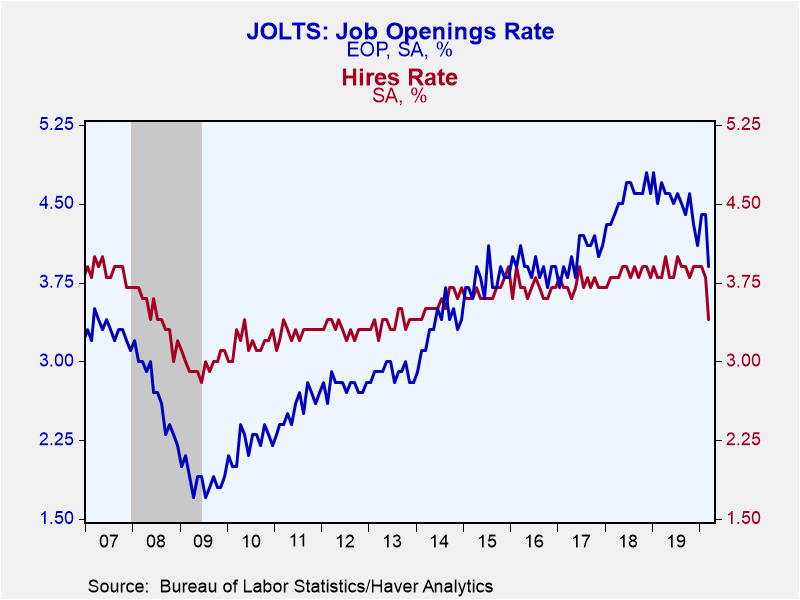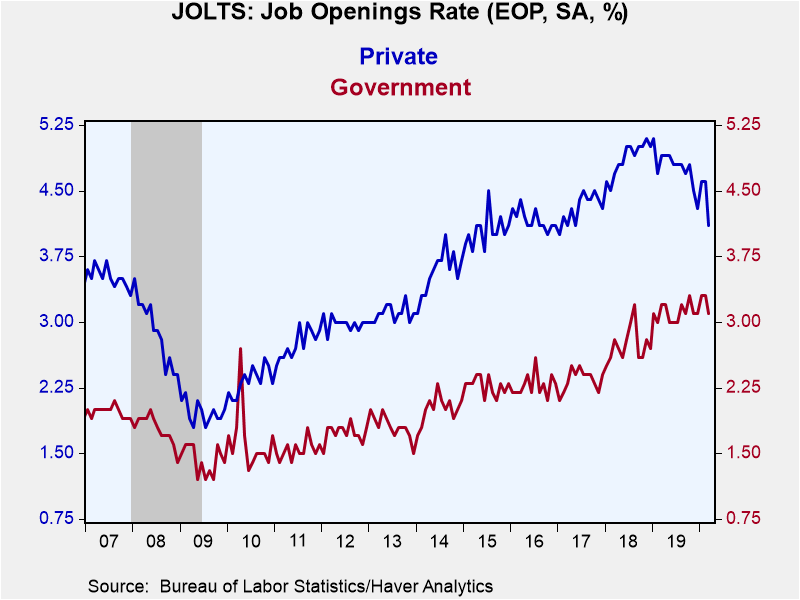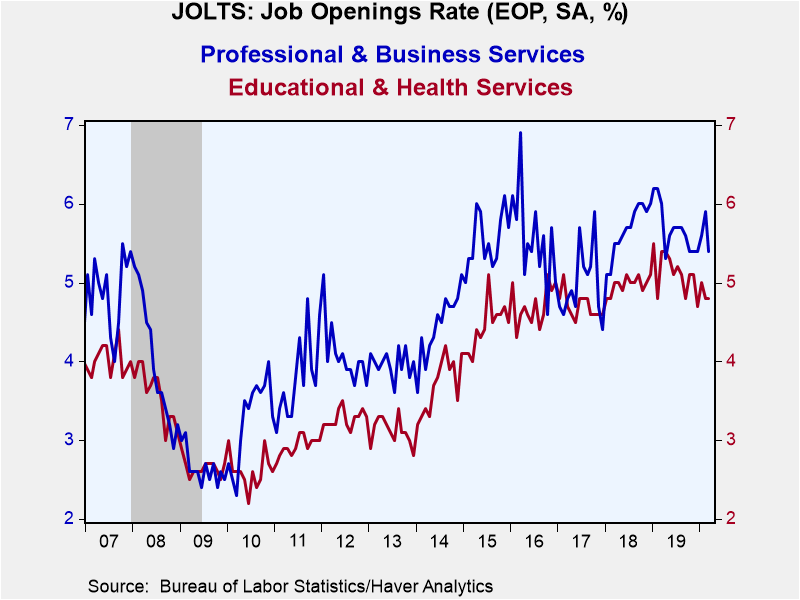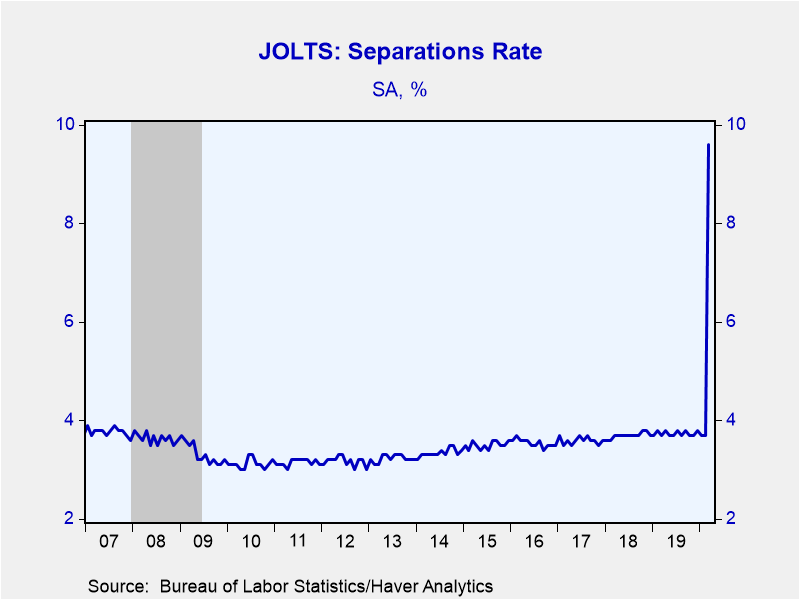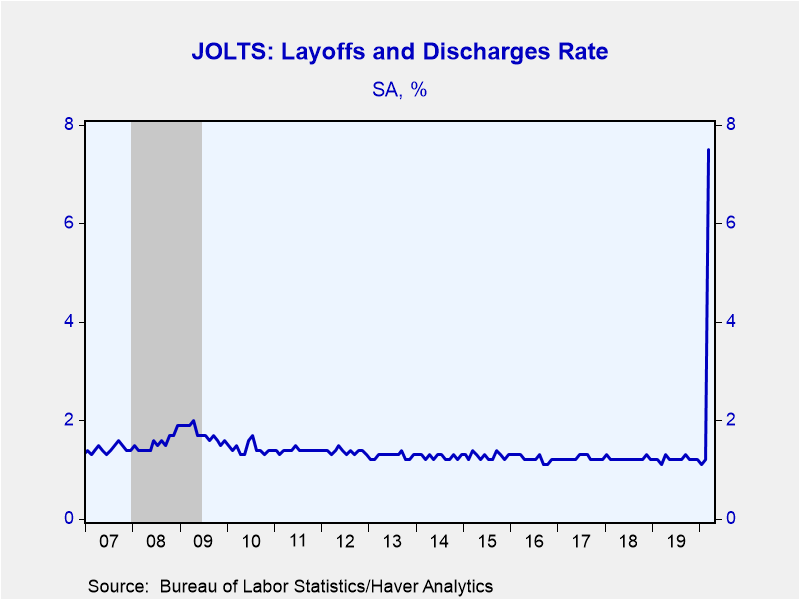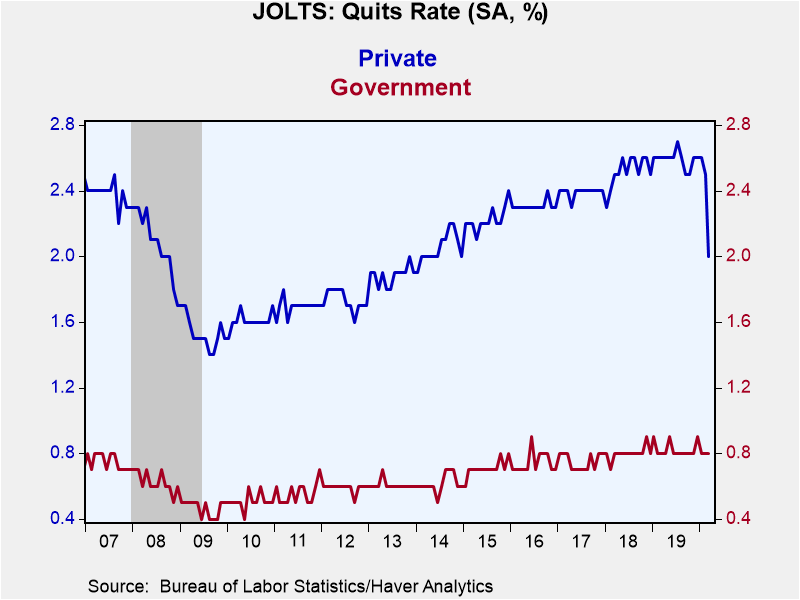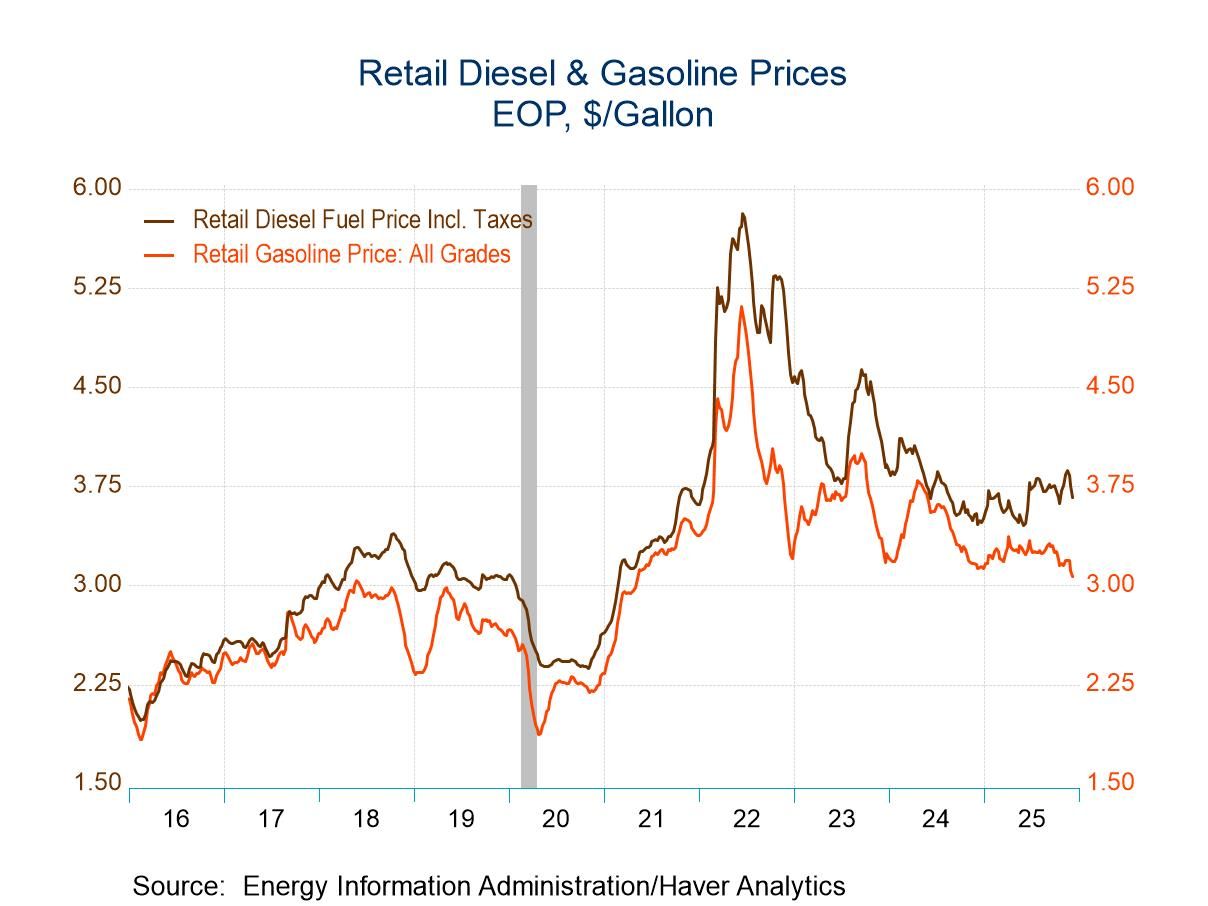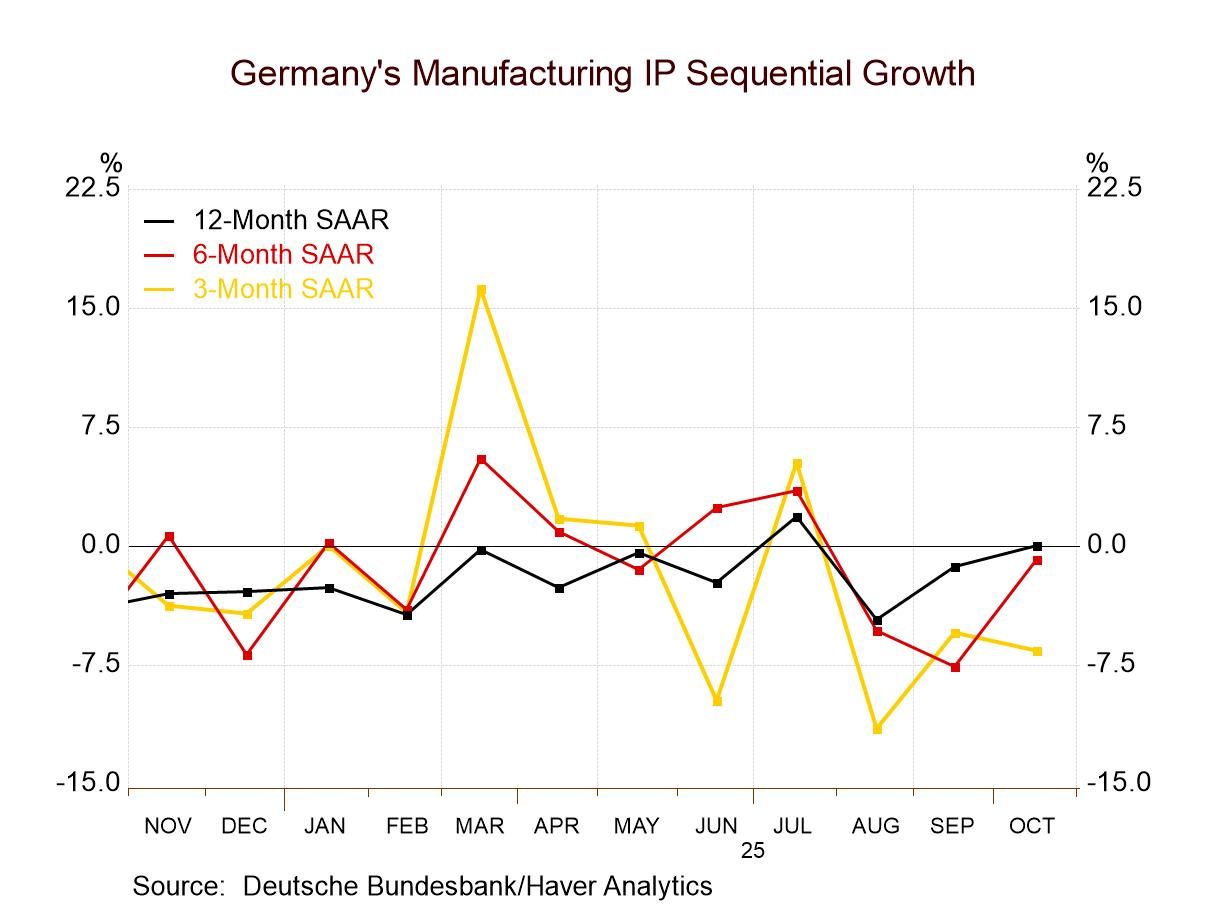 Global| May 15 2020
Global| May 15 2020U.S. JOLTS: Job Openings Start to Evaporate in March
by:Tom Moeller
|in:Economy in Brief
Summary
• Data indicate severe weakness in labor market. • Hiring weakens as job openings start to disappear. • Layoffs surge. Fewer quits suggest workers have no option but to stay put. The Bureau of Labor Statistics reported that the total [...]
• Data indicate severe weakness in labor market.
• Hiring weakens as job openings start to disappear.
• Layoffs surge. Fewer quits suggest workers have no option but to stay put.
The Bureau of Labor Statistics reported that the total job openings rate declined to 3.9% during March from 4.4% in February. It is the lowest level since May 2017. The openings rate is calculated as job openings as a percent of total employment plus jobs that have not yet been filled. These figures remained below the 4.8% record in January 2019. The hiring rate plummeted in March to 3.4% from 3.8% to the lowest level since February 2014. The layoff and discharge rate spiked to a record 7.5% from 1.2% in February. The quits rate plunged to 1.8% from 2.3%.
As of the last business day of March, the job openings level totaled 6.191 million, down 15.9% y/y. In the private sector, they fell 17.6% y/y, but were off just 1.2% y/y in government. The level of job openings fell by roughly one-quarter y/y in manufacturing. The number of job openings plummeted by roughly one-third y/y in leisure & hospitality but declined 9.5% y/y in professional & business services.
The private-sector job openings rate declined to a roughly three-year low of 4.1%, down from the record rate of 5.1% reached in January 2019. The construction sector's job openings rate of 3.1% compared to 5.4% at its peak in April of last year. The rate in manufacturing fell to a roughly three-year low of 2.4%. The rate in leisure & hospitality collapsed and fell moderately in professional & business services. The government sector job openings rate eased modestly from the February record 3.3%.
In March, the level of hiring fell 11.2% to 5.206 million with the hiring rate drastically weaker at 3.4%. Private sector hiring declined 9.4% y/y but government hiring jumped 5.7% y/y. Hiring in the factory sector fell 15.1% while leisure & hospitality hiring fell more than one-third y/y. Professional & business service sector hiring fell moderately y/y.
Data on separations reflect a combination of layoffs and quits. The total separations rate surged to a record 9.6% as the level of separations increased by 161.4% y/y. The surge in the level of separations was driven by the private sector. The rate was 33.3% in leisure & hospitality, up from 6.1% in February. Professional & business realized a 7.3% rate, and it surged to a record 6.9% in education & health services.
The layoff & discharge rate in the private sector jumped to 8.7% while it was stable at 0.8% in government. The rate of 8.1% in construction compared to 4.4% in manufacturing. The 2.1% rate in the information sector was nearly a record and compared to a record 2.5% in finance. The professional & business services layoff & discharge rate jumped to a record 4.4%.
The quits rate dropped to the 2014 low of 1.8%. The private sector quits rate of 2.0% compared to 0.8% in government. The level of job quits in the private sector fell roughly one-quarter y/y and by 0.6% y/y in government. In manufacturing, the level of job quits declined by roughly one-third y/y but held steady y/y in finance. The number of quits in professional & business services declined 17.6% y/y and fell 29.2% y/y in leisure & hospitality.
The Job Openings and Labor Turnover Survey (JOLTS) dates to December 2000; the figures are available in Haver's USECON database.
| JOLTS (Job Openings & Labor Turnover Survey, SA) | Mar | Feb | Jan | Mar'19 | Mar'18 | Mar'17 |
|---|---|---|---|---|---|---|
| Job Openings, Total | ||||||
| Rate (%) | 3.9 | 4.4 | 4.4 | 4.7 | 4.4 | 3.8 |
| Total (000s) | 6,191 | 7,004 | 7,012 | 7,364 | 6,865 | 5,816 |
| Hires, Total | ||||||
| Rate (%) | 3.4 | 3.8 | 3.9 | 3.8 | 3.8 | 3.7 |
| Total (000s) | 5,206 | 5,864 | 5,925 | 5,689 | 5,629 | 5,395 |
| Layoffs & Discharges, Total | ||||||
| Rate (%) | 7.5 | 1.2 | 1.1 | 1.1 | 1.2 | 1.2 |
| Total (000s) | 11,372 | 1,846 | 1,741 | 1,698 | 1,794 | 1,749 |
| Quits, Total | ||||||
| Rate (%) | 1.8 | 2.3 | 2.3 | 2.3 | 2.2 | 2.1 |
| Total (000s) | 2,782 | 3,436 | 3,574 | 3,525 | 3,301 | 3,134 |
Tom Moeller
AuthorMore in Author Profile »Prior to joining Haver Analytics in 2000, Mr. Moeller worked as the Economist at Chancellor Capital Management from 1985 to 1999. There, he developed comprehensive economic forecasts and interpreted economic data for equity and fixed income portfolio managers. Also at Chancellor, Mr. Moeller worked as an equity analyst and was responsible for researching and rating companies in the economically sensitive automobile and housing industries for investment in Chancellor’s equity portfolio. Prior to joining Chancellor, Mr. Moeller was an Economist at Citibank from 1979 to 1984. He also analyzed pricing behavior in the metals industry for the Council on Wage and Price Stability in Washington, D.C. In 1999, Mr. Moeller received the award for most accurate forecast from the Forecasters' Club of New York. From 1990 to 1992 he was President of the New York Association for Business Economists. Mr. Moeller earned an M.B.A. in Finance from Fordham University, where he graduated in 1987. He holds a Bachelor of Arts in Economics from George Washington University.


